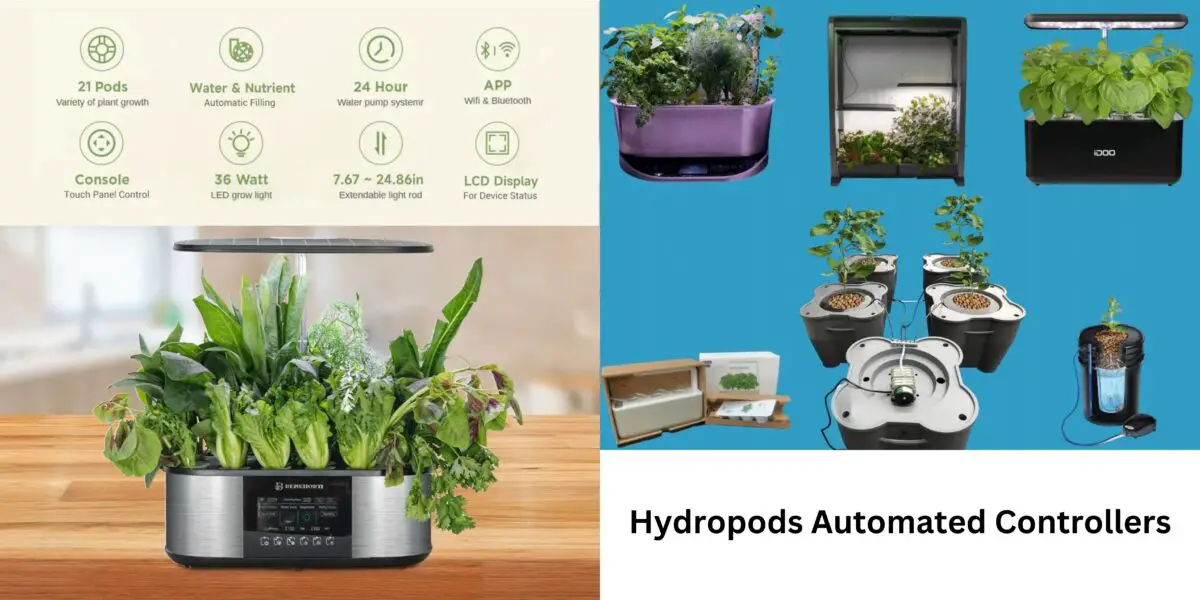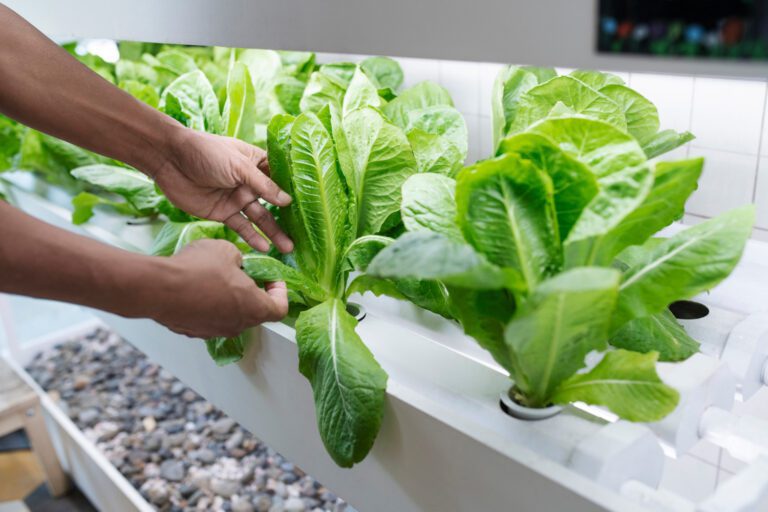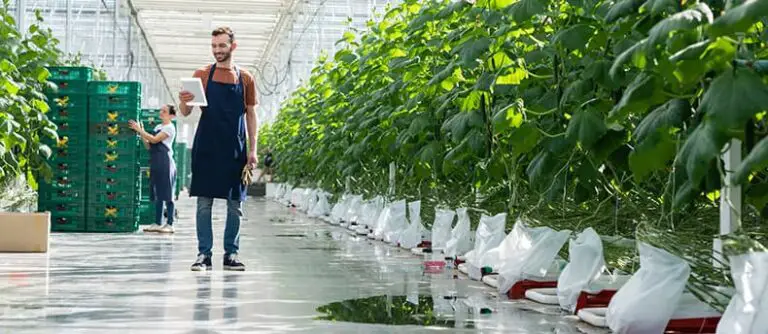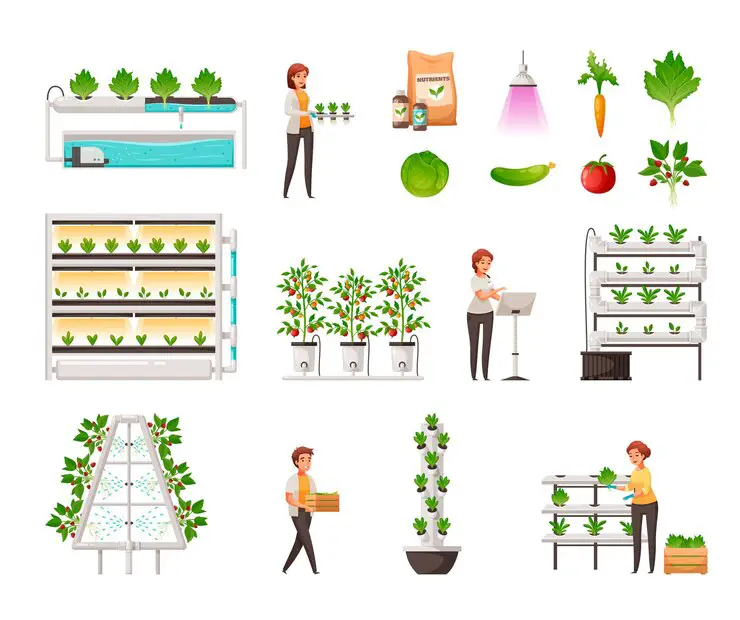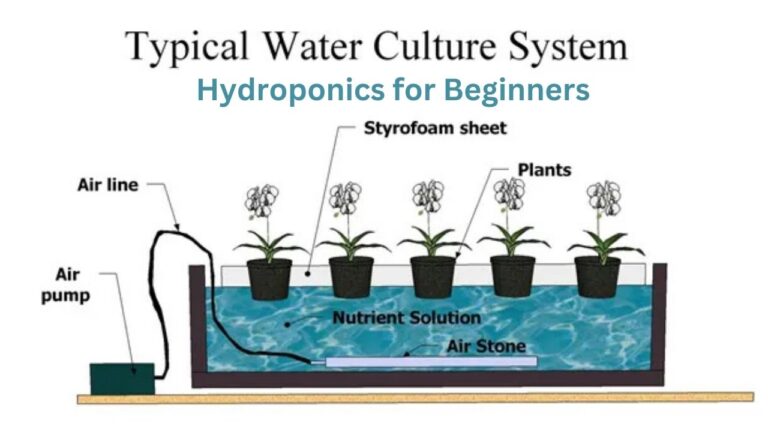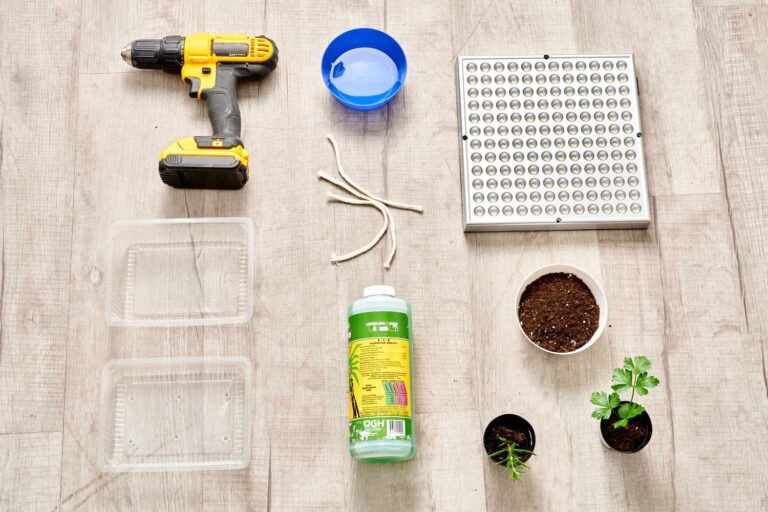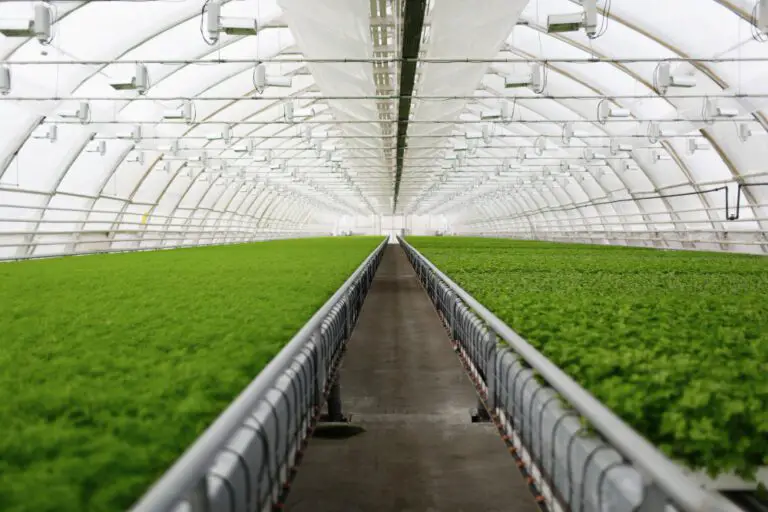Hydropods Automated Controllers: the best way to Use These Devices to Automate and Monitor Your Hydroponic System
Table of Contents
The Advantages of Using Hydropods Automated Controllers
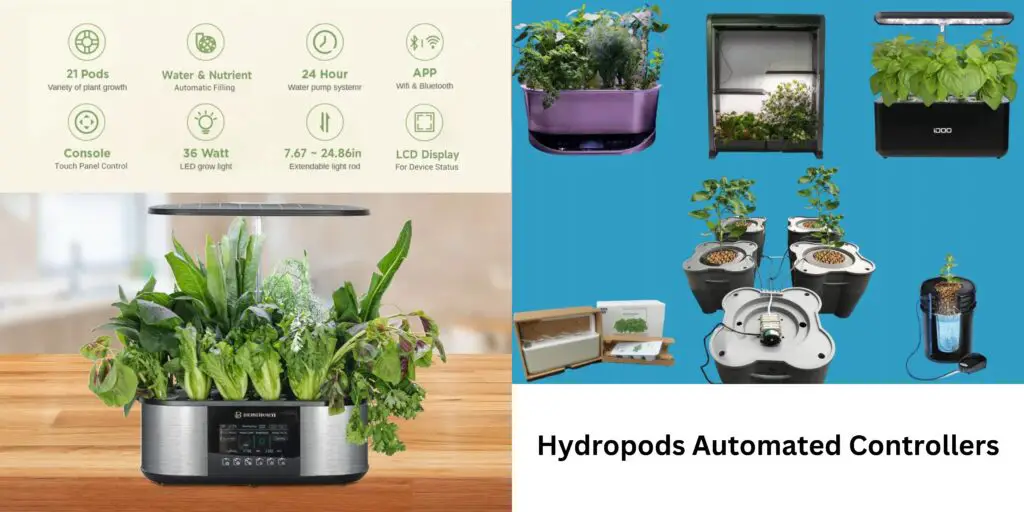
Hydropods Automated Controllers offer a multitude of advantages for hydroponic growers, making them an essential tool for maximizing efficiency and yield. One of the most significant benefits is the precise control it provides over the growing environment. With the ability to monitor and adjust key factors such as nutrient concentration, pH levels, and temperature, growers can create the ideal conditions for their crops to thrive. This level of control minimizes the risk of nutrient imbalances or environmental fluctuations, leading to healthier plants and higher-quality yields.
Another advantage of Hydropods Automated Controllers is the time and labor-saving features they offer. Traditionally, hydroponic systems require regular monitoring and manual adjustments. However, with automated controllers, growers can program schedules and set parameters, allowing the system to make necessary adjustments automatically. This eliminates the need for constant supervision and frees up valuable time for other tasks. Additionally, the ability to remotely monitor and control the system through mobile applications or computer interfaces further enhances convenience and flexibility for growers. Invest in a Hydropods Automated Controller and experience these advantages firsthand, allowing you to streamline your hydroponic operation and achieve optimal results.
Exploring the Functionality of Hydropods Automated Controllers
Hydropods Automated Controllers have revolutionized the way hydroponic systems are managed and maintained. These advanced controllers provide gardeners with a wide range of functionality that simplifies the cultivation process and maximizes productivity. With the ability to automate essential tasks, such as nutrient delivery, pH balancing, and light scheduling, these controllers allow gardeners to focus on other important aspects of their hydroponic system.
One of the key functionalities of Hydropods Automated Controllers is their ability to accurately regulate nutrient delivery. By precisely controlling the amount of nutrients supplied to the plants, these controllers ensure optimal growth and development. This level of control eliminates the guesswork involved in manual nutrient dosing and minimizes the risk of over-fertilization or nutrient deficiencies. Additionally, these controllers can adjust nutrient concentration based on the specific needs of different plant varieties, resulting in healthier, more vigorous crops.
Understanding the Basics of Hydroponic Systems
Hydroponic systems have gained significant popularity among gardening enthusiasts for their ability to grow plants without the use of soil. Unlike traditional gardening methods, hydroponics rely on a nutrient-rich water solution to provide the necessary minerals and elements for plant growth. This method allows for precise control over the growing conditions, resulting in faster growth rates and higher crop yields.
One of the key advantages of hydroponics is its ability to optimize water usage. In traditional soil-based systems, water can easily be lost through evaporation or leaching. However, in hydroponics, water is recirculated and used more efficiently. This not only conserves water but also reduces the risk of nutrient runoff, promoting environmental sustainability.
Moreover, hydroponics allows for greater flexibility in plant placement. Since the plants are not reliant on soil, they can be grown vertically or in tight spaces, making it an ideal solution for urban gardening or areas with limited land availability. Additionally, the controlled environment of hydroponics minimizes the risk of pests and diseases, further enhancing the success of the crops.
When it comes to the basics of hydroponic systems, understanding the importance of water efficiency, plant placement, and maintaining a controlled environment sets the foundation for successful gardening. With this knowledge, gardening enthusiasts can confidently delve into the world of hydroponics and explore the countless possibilities it offers for growing healthy and thriving plants.
The Importance of Automation in Hydroponics
Automation plays a crucial role in the success of hydroponic systems. By utilizing automated controllers, gardeners can achieve greater efficiency, precision, and control in their growing operations. With the ability to monitor and adjust crucial parameters such as nutrient delivery, pH levels, lighting schedules, and irrigation cycles, automation takes hydroponics to a whole new level.
One of the key advantages of automation in hydroponics is the ability to maintain optimal conditions for plant growth consistently. Automated controllers ensure that plants receive the right amount of nutrients, water, and light at the right time, eliminating the guesswork and human error that can often lead to subpar results. By maintaining precise control over these variables, growers can create an environment that maximizes the plants’ potential, leading to healthier and more abundant yields.
Furthermore, automation simplifies the management of hydroponic systems, allowing gardeners to save both time and effort. Instead of manually checking and adjusting various parameters multiple times a day, automated controllers handle these tasks seamlessly. This enables gardeners to focus on other aspects of their operation, such as crop planning, pest management, and overall system maintenance. With the right automated controller, even novice growers can enjoy the benefits of hydroponics without feeling overwhelmed.
In the next section, we will delve deeper into the specific functionalities and features of hydropods automated controllers, exploring their capabilities in enhancing the efficiency and productivity of hydroponic systems.
Choosing the Right Hydropods Automated Controller for Your Hydroponic System
When it comes to choosing the right Hydropods automated controller for your hydroponic system, there are several key factors to consider. One of the first things you’ll want to assess is the size and scale of your hydroponic setup. Different controllers have varying capacities, so it’s essential to select one that can effectively manage the number of plants and the size of your system.
Another crucial aspect to consider is the level of automation you desire. Some automated controllers offer basic functions such as scheduling irrigation cycles and adjusting nutrient levels, while others provide more advanced features like pH and temperature monitoring, as well as data logging capabilities. Assessing your specific needs and the complexity of your hydroponic system will help you determine the level of automation that is appropriate for you.
Additionally, it’s important to consider the compatibility and integration capabilities of the automated controller. Some controllers may be designed to work with specific hydroponic systems or brands, while others offer more flexibility in terms of compatibility. Ensuring that the controller you choose is compatible with your existing setup or has the ability to integrate seamlessly will prevent any compatibility issues down the line.
Installing and Setting Up Your Hydropods Automated Controller
When it comes to installing and setting up your Hydropods Automated Controller, there are a few key steps to follow to ensure a smooth and successful process. First, carefully review the user manual provided with your controller, as it will contain important information specific to your model.
Next, identify a suitable location for your controller. It should be placed in a clean and dry area that is easily accessible for monitoring and adjustments. Consider factors such as proximity to your hydroponic system and power supply availability.
Once you have chosen the location, mount your Hydropods Automated Controller securely on a stable surface. It is important to ensure that it is placed away from any potential sources of water or high humidity.
After mounting the controller, connect it to your hydroponic system using the appropriate cables and connectors. Check the manual for detailed instructions on how to make these connections correctly.
Finally, power on the Hydropods Automated Controller and follow the prompts on the display or interface to complete the initial setup. This may involve inputting certain parameters such as nutrient mix ratios, pH levels, and lighting schedules depending on the specific functions of your model.
Following these steps will help you properly install and set up your Hydropods Automated Controller, laying the foundation for optimizing the performance and efficiency of your hydroponic system.
Configuring the Settings on Your Hydropods Automated Controller
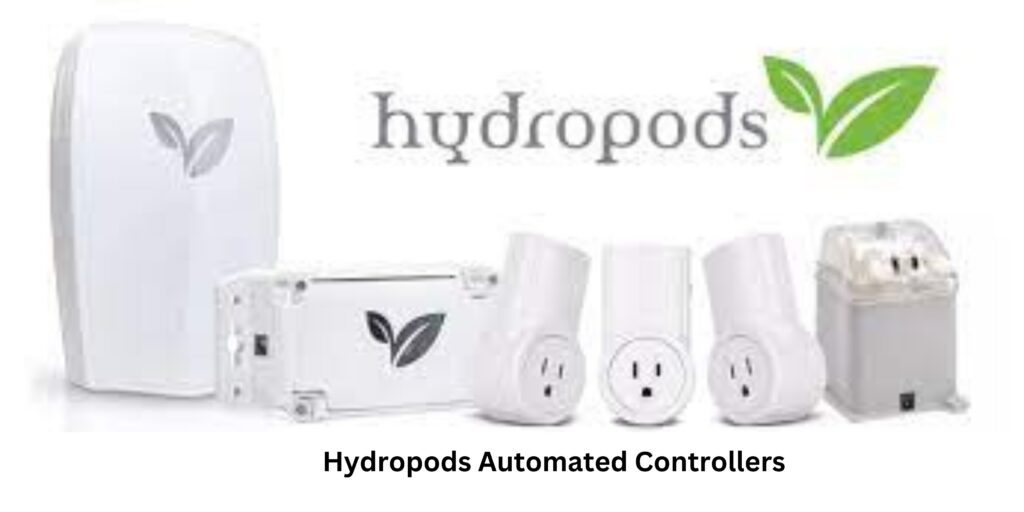
Once you have successfully installed your Hydropods Automated Controller, the next step is to configure the settings to ensure optimal performance and efficiency in your hydroponic system. The configuration process allows you to customize various parameters to suit your specific needs and preferences.
To begin, access the controller’s user interface either through the built-in touchscreen or via the companion mobile app. From here, you will have access to a range of configurable settings, such as light schedules, nutrient dosing intervals, pH and EC levels, temperature and humidity thresholds, and much more. It is important to familiarize yourself with each setting and understand how it impacts your plants’ growth and overall system performance.
Before making any changes, it is recommended to conduct thorough research or consult with experts to determine the ideal settings for your particular crop and growth stage. Take into consideration factors such as the plant’s nutrient requirements, light intensity, temperature tolerance, and desired growth rate. By fine-tuning these settings, you can create the perfect environment for your plants, promoting healthy growth and maximizing yields.
Monitoring and Adjusting Your Hydroponic System with the Hydropods Automated Controller
Monitoring and adjusting your hydroponic system is crucial for ensuring optimal plant growth and maximizing yields. With the Hydropods Automated Controller, this process becomes effortless and efficient.
The Hydropods Automated Controller offers advanced monitoring capabilities, allowing you to closely track key parameters such as pH levels, nutrient concentration, temperature, and humidity. Through its intuitive interface, you can easily access real-time data and charts, enabling you to observe trends and identify any deviations from the optimal ranges. By regularly monitoring these variables, you can proactively address any issues that may arise and make necessary adjustments to maintain ideal conditions for your plants.
Additionally, the Hydropods Automated Controller provides the functionality to control and adjust various aspects of your hydroponic system. From remotely managing water levels and nutrient dosing to controlling the intensity and duration of lighting, this controller puts you in full command of your setup. With its precise automation features, you can create customized schedules and programs tailored to the specific needs of your plants, ensuring they receive the right conditions at the right time. The controller’s reliability and accuracy eliminate the guesswork, giving you peace of mind and allowing you to focus on other essential tasks.
Troubleshooting Common Issues with Hydropods Automated Controllers
Troubleshooting Common Issues with Hydropods Automated Controllers
While Hydropods automated controllers are designed to streamline the hydroponic growing process, occasional issues may arise that require troubleshooting. By understanding common problems and their solutions, you can ensure the smooth operation of your hydroponic system.
One common issue that users may encounter is a malfunctioning sensor. Sensors play a crucial role in monitoring and maintaining the optimal conditions for plant growth. If you notice inconsistent readings or sensor failures, it is essential to check the sensor’s connection and clean any debris that may be affecting its performance. Additionally, recalibrating the sensor according to the manufacturer’s instructions can help restore accurate readings. By regularly checking and maintaining the sensors, you can minimize issues related to inaccurate data and make informed adjustments to your hydroponic system.
Another issue that may occur relates to the connectivity and communication between the controller and other devices or sensors. If you experience difficulties in syncing or receiving data from external devices, ensure that all connections are secure and properly configured. Troubleshooting steps may include resetting the controller, updating firmware, or reinstalling the necessary software. By ensuring a strong and reliable connection, you can effectively monitor and adjust your hydroponic system for optimal plant growth.
In the next section, we will explore tips and techniques for maximizing the efficiency of your hydroponic system using Hydropods automated controllers. Stay tuned for valuable insights and strategies to enhance your gardening experience.
Tips for Maximizing the Efficiency of Your Hydroponic System Using Hydropods Automated Controllers
To maximize the efficiency of your hydroponic system using Hydropods automated controllers, there are several key tips to keep in mind. First and foremost, it is crucial to regularly monitor and adjust the settings on your automated controller. This will ensure that your system is operating at optimal levels and that your plants are receiving the right amount of nutrients, light, and water.
In addition, it is important to regularly clean and maintain your hydroponic system. This includes cleaning out filters, checking for any clogs or blockages, and ensuring that all equipment is functioning properly. By keeping your system clean and well-maintained, you can prevent any potential issues that could impact its efficiency.
Furthermore, it is recommended to integrate other devices and sensors with your Hydropods automated controller. This allows for greater control and precision in managing your hydroponic system. For example, using a pH sensor can help you monitor and adjust the pH levels of your nutrient solution, ensuring that your plants are receiving the optimal pH range for their growth.
Lastly, don’t forget the importance of regular data analysis and record-keeping. By keeping track of key metrics such as temperature, humidity, pH, and nutrient levels, you can identify any trends or patterns that may be affecting your system’s efficiency. This data can also help you make informed decisions and adjustments to optimize your hydroponic system’s performance.
By following these tips and utilizing the capabilities of your Hydropods automated controller, you can maximize the efficiency of your hydroponic system and achieve optimal plant growth and yield.
Integrating Other Devices and Sensors with Hydropods Automated Controllers
Integrating Other Devices and Sensors with Hydropods Automated Controllers
In today’s age of advanced technology, the integration of other devices and sensors with Hydropods Automated Controllers has opened up new possibilities for optimizing hydroponic systems. By incorporating external devices and sensors, gardeners can take their cultivation to the next level, ensuring increased efficiency, precision, and control over their plants’ growth.
One key benefit of integrating other devices with Hydropods Automated Controllers is the ability to monitor and control various environmental factors. For instance, by connecting a temperature sensor, gardeners can ensure that their plants are thriving in the optimal temperature range. This not only promotes healthy growth but also prevents the risk of overheating or chilling, which can be detrimental to plants’ health. Moreover, integrating devices such as pH meters and electrical conductivity (EC) sensors allows gardeners to closely monitor nutrient levels, ensuring that plants receive the ideal nutrient balance for optimal growth. This level of precision and control creates an environment that mimics nature’s best conditions, maximizing plant health and productivity.
The Future of Automation in Hydroponics: Trends and Innovations
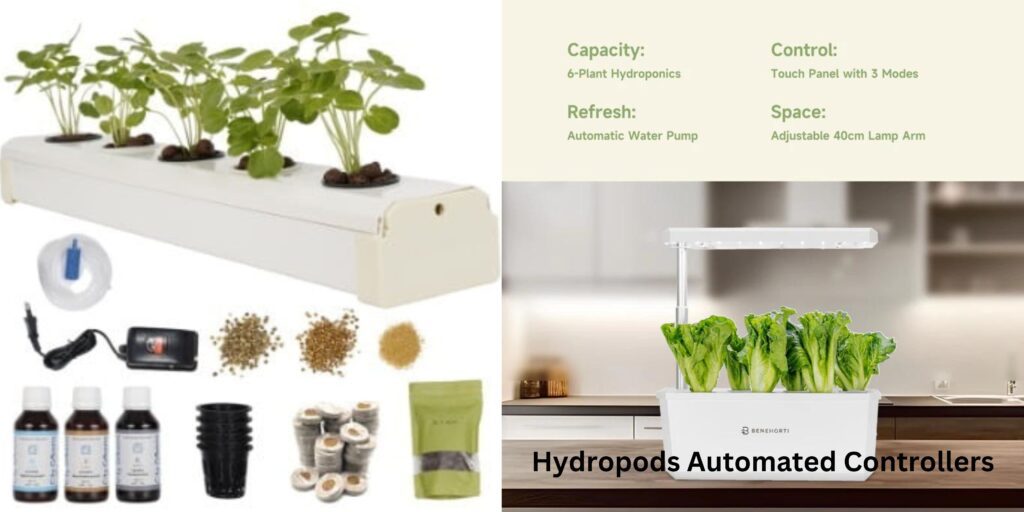
As hydroponics continues to gain popularity in the realm of gardening and farming, the future of automation in this innovative field looks promising. With advancements in technology and a growing demand for efficient and sustainable food production, hydroponics is expected to undergo exciting trends and innovations in the coming years.
One of the key trends in the future of automation in hydroponics is the integration of artificial intelligence (AI) systems. AI has the potential to revolutionize the way we manage and monitor hydroponic systems. By analyzing vast amounts of data and making autonomous decisions, AI-powered controllers can optimize the growth conditions for plants, ensuring they receive the precise amount of nutrients, light, and water they need for healthy development.
Another anticipated innovation is the use of internet of things (IoT) technology in hydroponics automation. IoT allows for seamless connectivity between various devices and sensors, enabling real-time monitoring and control of hydroponic systems from anywhere in the world. This connectivity not only enhances convenience for growers but also allows for more precise and timely adjustments to the growing conditions, resulting in improved yields and overall plant health.
With these emerging trends and innovations on the horizon, it is an exciting time for hydroponics enthusiasts and professionals alike. As technology continues to evolve and more resources are invested in research and development, the future of automation in hydroponics holds great potential for revolutionizing the way we grow our food and nourish our communities.
Certainly! Below is a table summarizing key information about Hydropods Automated Controllers:
| Feature | Description |
|---|---|
| Automation Level | High level of automation for hydroponic systems. |
| Controlled Parameters | Monitors and controls factors like pH, EC, temperature, and nutrient dosing. |
| Compatibility | Designed for use with various hydroponic systems including DWC, NFT, and drip systems. |
| User Interface | Intuitive and user-friendly interface for easy programming and monitoring. |
| Connectivity | Often equipped with Bluetooth or Wi-Fi for remote monitoring and control through mobile apps or computer interfaces. |
| Data Logging | Records and stores data on environmental conditions and system performance over time. |
| Alarm Systems | Provides alerts for out-of-range parameters, ensuring quick response to issues. |
| Nutrient Dosing | Precise dosing of nutrients to maintain optimal nutrient levels for plant growth. |
| pH Regulation | Monitors and adjusts pH levels automatically to prevent fluctuations. |
| EC/TDS Control | Manages Electrical Conductivity (EC) or Total Dissolved Solids (TDS) levels for nutrient concentration control. |
| Temperature Control | Regulates the temperature within the hydroponic system to optimize plant growth. |
| Expandability | Some controllers allow for the integration of additional sensors or peripherals for enhanced functionality. |
| Power Consumption | Typically designed to be energy-efficient. |
| Brand Options | Examples include Hydropods, Bluelab, and other hydroponic automation brands. |
| Installation | Generally easy to install, with user manuals and online support available. |
| Price Range | Prices vary based on features and brand reputation. |
| Warranty | Typically comes with a warranty to ensure product reliability. |
Note: The specifics of features may vary depending on the model and brand of the automated controller. It’s essential to review product specifications and user reviews when selecting an automated controller for a hydroponic system.
Case Studies: Real-Life Examples of Successful Hydroponic Systems Using Hydropods Automated Controllers
In today’s modern era, hydroponic systems are gaining popularity as efficient and sustainable alternatives to traditional soil-based gardening. With the advancement of technology, automated controllers such as the Hydropods Automated Controller have revolutionized the way hydroponic systems are managed. Let’s delve into two real-life case studies that highlight the successful implementation of Hydropods Automated Controllers in hydroponic systems.
Case Study 1:
In a commercial greenhouse in California, the implementation of Hydropods Automated Controllers brought a remarkable increase in productivity and crop yield. By utilizing the advanced features of the controller, such as precise nutrient and pH monitoring and automated adjustment capabilities, the growers were able to optimize nutrient delivery and create a stable growing environment. As a result, the system produced high-quality crops consistently, leading to significant profits for the greenhouse. The precision and reliability of the Hydropods Automated Controller played a vital role in minimizing human error and maximizing the efficiency of nutrient management, ensuring the plants received precisely what they needed for optimal growth.
Case Study 2:
A hydroponic enthusiast in a small-scale urban setting utilized the Hydropods Automated Controller to transform a spare room into a flourishing indoor garden. With limited space and time, the automation provided by the controller allowed for seamless management of the hydroponic system. The integrated sensors measured essential parameters such as temperature, humidity, and water levels, while the controller made necessary adjustments to maintain optimal growing conditions. This simplified approach to hydroponics enabled the gardener to achieve impressive results, even with minimal prior gardening experience. The efficiency and ease of use offered by the Hydropods Automated Controller made it a valuable tool for maximizing space and cultivating a wide variety of fresh and healthy produce.
These case studies demonstrate the tremendous potential and undeniable benefits of incorporating Hydropods Automated Controllers in hydroponic systems. From commercial operations to small-scale setups, these controllers provide growers with the means to optimize plant health, increase yield, and streamline the management process. As we explore more examples in this article, you will witness the incredible impact that automation has on the future of hydroponics.
• In a commercial greenhouse in California, the implementation of Hydropods Automated Controllers led to increased productivity and crop yield.
• The advanced features of the controller, such as precise nutrient and pH monitoring and automated adjustment capabilities, optimized nutrient delivery and created a stable growing environment.
• The system consistently produced high-quality crops, resulting in significant profits for the greenhouse.
• The precision and reliability of the Hydropods Automated Controller minimized human error and maximized nutrient management efficiency.
• A hydroponic enthusiast in a small-scale urban setting used the Hydropods Automated Controller to transform a spare room into an indoor garden.
• Limited space and time were no longer obstacles due to the automation provided by the controller.
• Integrated sensors measured essential parameters like temperature, humidity, and water levels while making necessary adjustments for optimal growing conditions.
• This simplified approach allowed even those with minimal gardening experience to achieve impressive results.
These case studies highlight:
– The potential benefits of incorporating Hydropods Automated Controllers in hydroponic systems
– How these controllers can optimize plant health, increase yield, and streamline management processes
– Automation’s incredible impact on the future of hydroponics.
What are the benefits of using Hydropods Automated Controllers?
Hydropods Automated Controllers offer several advantages, including precise control over nutrient delivery, pH levels, and lighting schedules. They also provide automation, reducing the need for manual monitoring and adjustments, and improving the overall efficiency of hydroponic systems.
How do Hydropods Automated Controllers function?
Hydropods Automated Controllers use advanced sensors and algorithms to monitor and optimize various parameters in hydroponic systems. They can regulate nutrient dosing, pH levels, and even control the timing and intensity of lighting. This ensures that plants receive optimal conditions for growth.
What are the basics of hydroponic systems?
Hydroponic systems are soilless cultivation methods where plants are grown in nutrient-rich water solutions. The roots are either suspended in the water or supported by an inert medium. Nutrients are provided directly to the roots, eliminating the need for soil.
Why is automation important in hydroponics?
Automation in hydroponics allows for precise control and optimization of various parameters, leading to improved plant growth and higher yields. It reduces the margin for error and minimizes manual labor, making hydroponic systems more efficient and manageable.
How do I choose the right Hydropods Automated Controller for my hydroponic system?
When selecting a Hydropods Automated Controller, consider the size and complexity of your hydroponic system, as well as the specific parameters you need to monitor and control. Look for a controller that offers the necessary features and compatibility with your setup.
How do I install and set up a Hydropods Automated Controller?
The installation process for a Hydropods Automated Controller will vary depending on the specific model. However, it generally involves connecting the controller to relevant sensors, pumps, and other devices. Follow the manufacturer’s instructions for proper installation and setup.
How do I configure the settings on a Hydropods Automated Controller?
Each Hydropods Automated Controller will have its own interface and configuration options. Typically, you will need to input desired parameters such as nutrient concentration, pH levels, and lighting schedules. Refer to the controller’s manual or user guide for detailed instructions on configuring settings.
How can I monitor and adjust my hydroponic system using a Hydropods Automated Controller?
Hydropods Automated Controllers provide real-time monitoring of various parameters such as pH levels, nutrient concentrations, and temperature. Through the controller’s interface, you can access this data and make necessary adjustments to maintain optimal conditions for plant growth.
What are some common issues with Hydropods Automated Controllers and how can I troubleshoot them?
Common issues with Hydropods Automated Controllers may include sensor malfunctions, connectivity problems, or incorrect readings. To troubleshoot, ensure all connections are secure, calibrate sensors if necessary, and consult the manufacturer’s troubleshooting guide for specific issues.
How can I maximize the efficiency of my hydroponic system using a Hydropods Automated Controller?
To maximize efficiency, regularly monitor and adjust the settings on your Hydropods Automated Controller based on the specific needs of your plants. Maintain proper nutrient levels, pH balance, and lighting schedules. Additionally, regularly clean and maintain the system to prevent clogs or other issues.
Can I integrate other devices and sensors with Hydropods Automated Controllers?
Yes, many Hydropods Automated Controllers offer compatibility with other devices and sensors. This allows for a more comprehensive monitoring and control system. Consult the controller’s documentation or contact the manufacturer to determine which devices are compatible and how to integrate them.
What are some trends and innovations in the future of automation in hydroponics?
The future of automation in hydroponics is likely to involve advancements in data analysis and machine learning, allowing for more precise and adaptive control systems. Integration with smart home technology and remote monitoring capabilities may also become more prevalent.

